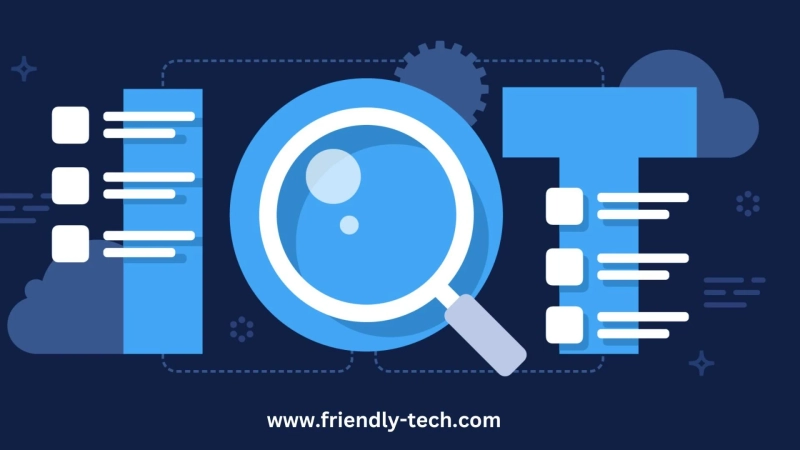The Internet of Things (IoT) has ushered in a new era of connectivity, transforming the way we interact with devices and data. At the heart of this revolution lies IoT enablement platforms, the unsung heroes that enable seamless IoT deployments. In this in-depth exploration, we'll delve into the world of IoT enablement platforms, understanding their significance, core components, use cases, challenges, and the promising future they offer.
1. Understanding IoT Enablement Platforms
IoT enablement platforms are comprehensive software solutions designed to simplify the complexity of IoT deployments. They serve as the backbone, connecting IoT devices, sensors, and applications, and enabling seamless data flow and communication. These platforms empower organizations to harness the full potential of IoT by providing the tools and infrastructure needed to create, manage, and scale IoT solutions.
2. Core Components of IoT Enablement Platforms
IoT enablement platforms consist of several key components that work harmoniously to deliver their capabilities:
Device Management: This component allows organizations to onboard, provision, and manage IoT devices efficiently. It includes features like device registration, remote monitoring, and firmware updates.
Connectivity Management: Connectivity is the lifeline of IoT. This component ensures that devices remain connected by managing various communication protocols, networks, and data routing.
Data Ingestion and Processing: IoT generates vast amounts of data. This component handles data ingestion, storage, and processing, enabling real-time analytics and insights.
Security and Authentication: Security is paramount in IoT. These platforms provide robust security measures, including device authentication, data encryption, and access controls.
Analytics and Visualization: IoT data is valuable only when translated into actionable insights. Analytics and visualization tools enable organizations to derive meaningful information from IoT-generated data.
3. IoT Enablement Platform Use Cases
IoT enablement platforms find applications across a wide spectrum of industries and use cases:
Smart Cities: These platforms are used to manage urban infrastructure, optimize resource allocation, and improve the quality of life for residents through connected services.
Industrial IoT (IIoT): In manufacturing and industrial settings, IoT enablement platforms enhance production processes, monitor equipment health, and enable predictive maintenance.
Agriculture: IoT is transforming agriculture by providing real-time data on soil conditions, weather, and crop health, helping farmers optimize yield and resource usage.
Healthcare: In healthcare, these platforms enable remote patient monitoring, medication adherence tracking, and the management of medical devices.
Retail: Retailers use IoT enablement platforms for inventory management, customer analytics, and enhancing the shopping experience through smart shelves and checkout systems.
Energy and Utilities: In the energy sector, these platforms enable smart grid management, energy consumption monitoring, and the integration of renewable energy sources.
Transportation: IoT platforms are crucial for tracking and optimizing fleet operations, improving traffic management, and enabling autonomous vehicles.
4. Challenges in IoT Enablement Platforms
While IoT enablement platforms offer immense benefits, they also come with challenges:
Interoperability: The IoT ecosystem is diverse, with devices from various manufacturers and communication protocols. Ensuring seamless interoperability can be challenging.
Scalability: As IoT deployments grow, the platform must scale to accommodate a larger number of devices and data volume.
Security Concerns: IoT is a prime target for cyberattacks. IoT platforms must have robust security measures to protect data and devices.
Data Management: Handling vast amounts of data generated by IoT devices requires effective data management strategies, including storage, processing, and analysis.
Complexity: Managing an IoT deployment can be complex, especially for organizations new to IoT technology.
5. Solutions to IoT Enablement Platform Challenges
To address these challenges, organizations and IoT platform providers are adopting various solutions:
Standardization: Industry groups and standards organizations are working on standardizing IoT protocols to improve interoperability.
Edge Computing: Edge computing brings data processing closer to the devices, reducing latency and bandwidth requirements.
AI and Machine Learning: These technologies enhance security by identifying anomalies and improving predictive maintenance.
Blockchain: Blockchain is explored for enhancing trust and security in IoT transactions and data sharing.
Data Analytics: Advanced analytics tools are used to derive actionable insights from IoT data.
6. The Future of IoT Enablement Platforms
The future of IoT enablement platforms holds exciting possibilities:
5G: The rollout of 5G networks promises faster, more reliable connectivity, further accelerating IoT adoption and enabling real-time applications.
AI Integration: AI and machine learning will play an increasingly significant role in IoT enablement platforms, enabling predictive analytics and automation.
Edge AI: Edge AI devices and solutions will become more prevalent, allowing for real-time data analysis at the device level.
IoT Ecosystem Growth: The IoT ecosystem will continue to expand, with more devices, sensors, and applications coming into play, creating new opportunities for IoT enablement platforms.
In conclusion, IoT enablement platforms are the backbone of the IoT revolution, providing the tools and infrastructure needed to connect, manage, and optimize IoT solutions. They empower organizations across industries to harness the full potential of IoT technology, unlocking new opportunities for efficiency, innovation, and growth. As the IoT landscape continues to evolve, these platforms will remain at the forefront of enabling a smarter, more connected world.


